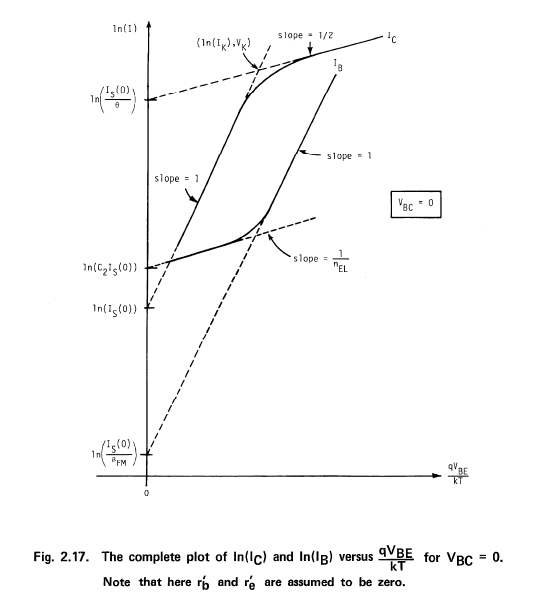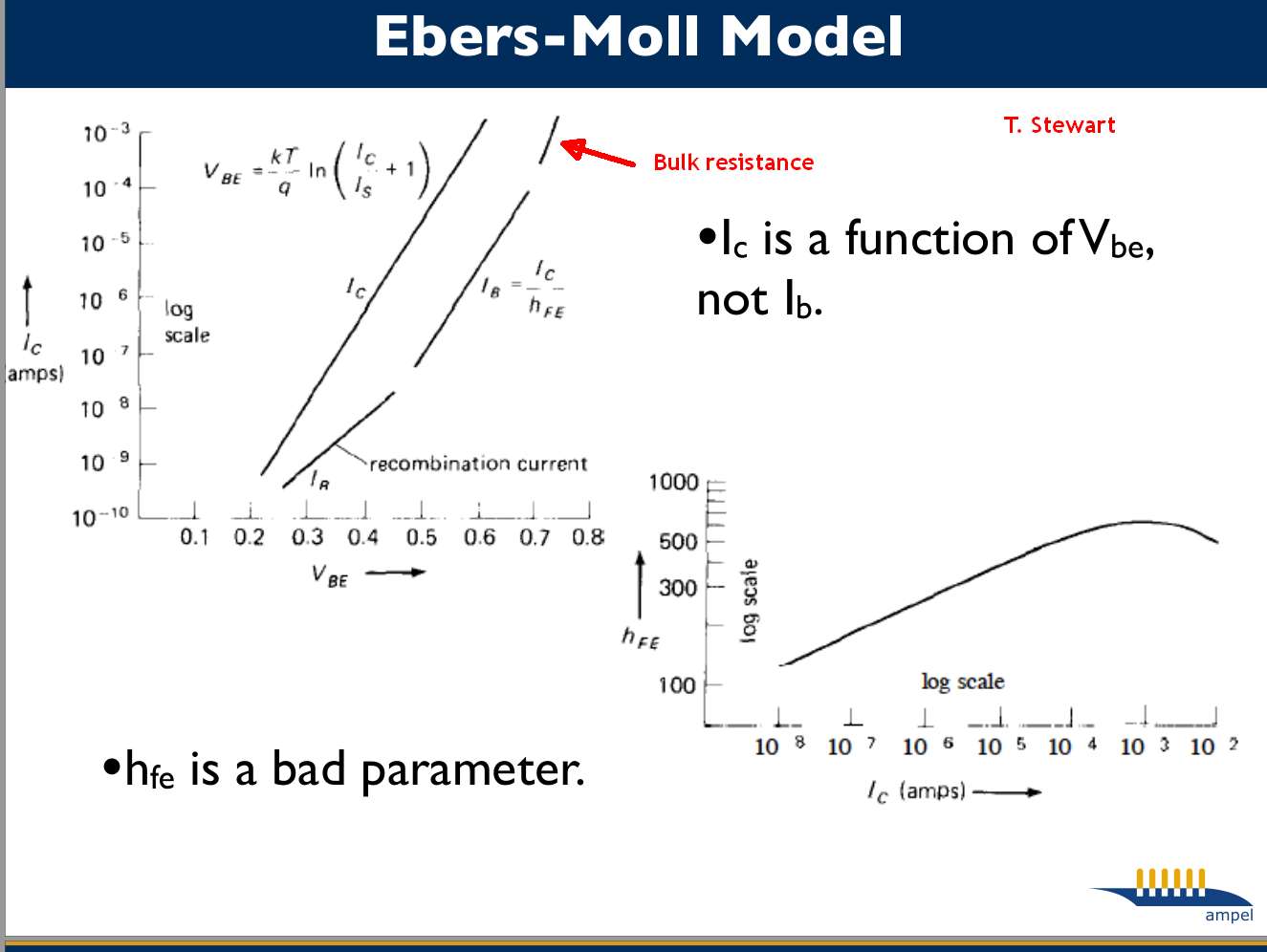"On the Variation of Junction-Transistor Current-Amplification Factor with Emitter Current," by W. M. Webster, Proc. IRE, Vol. 42, pp. 914-920, June 1954, is the seminal paper on this topic.
I've written about these effects before, here. But not directly, just as an aside. These were later (after the above paper) discussed in literature from the 1960's and 1970's typically as "Region I," "Region II," and "Region III." Region I is pretty much guided by additional factors related primarily to the base current and Region III results from changes in the collector current.
In Region I, the decline in \$\beta\$ is due to three components which can be ignored in the other regions but cannot be ignored with low currents involved. These are:
- The formation of emitter-base surface channels (which can be reduced by the careful application of processing/manufacturing); and,
- the recombination of surface carriers (which also can be reduced by the careful application of processing/manufacturing, but still remains a dominant part of the problem); and,
- the recombination of carriers in the emitter-base space-charge layer.
All three of these have similar variations with the base-emitter voltage so that you wind up with something akin to the following typical component equations:
$$\begin{align*}
I_{B_{channel}}&=I_{SAT_{channel}}\cdot\left(e^\frac{V_{BE}}{4\cdot V_T}-1\right)\\\\
I_{B_{surface}}&=I_{SAT_{surface}}\cdot\left(e^\frac{V_{BE}}{2\cdot V_T}-1\right)\\\\
I_{B_{space-charge}}&=I_{SAT_{space-charge}}\cdot\left(e^\frac{V_{BE}}{2\cdot V_T}-1\right)
\end{align*}$$
Although summed exponentials are not exactly equivalent to any single resulting equivalent exponential, it is practical (and done) to combine the above into a single modeled exponential that uses \$\eta_{_\text{EL}}\$ values often close to 2:
$$\begin{align*}
I_{B_{summed}}&=I_{SAT_{summed}}\cdot\left(e^\frac{V_{BE}}{\eta_{_\text{EL}}\cdot V_T}-1\right)
\end{align*}$$
For most BJTs, the above equation can be made to approximate the reality well enough for practical purposes (and it sums into the usual current equations.)
In Region III, the injection of minority carriers into the base region starts becoming increasingly important in comparison against the majority carrier concentrations. Because the space-charge neutrality is maintained in the base, the majority concentration has to increase by the same amount.
The finding is:
$$\begin{align*}
I_{C_{high-I_C}}&\propto e^\frac{V_{BE}}{2\cdot V_T}
\end{align*}$$
The other factor in Region III is, of course, an 'Ohmic resistance' and is already modeled as \$r_c\$ so it isn't included above.
A model constant is usually applied to the above equation and the resulting term then appears in the divisor used for the usual model saturation current equation.
The upshot for Region III is:
- The increasing importance of the injected minority carriers into the base; and,
- Ohmic resistance.
A useful summary of the situation is taken from "Modeling the Bipolar Transistor," by Ian Getreu. (Which, although old today, can still be found at lulu.com as a September 2009 reprint of a first edition that was printed three times: March and August of 1976, and again in November of 1979 [when I received my first copy of it while working at Tektronix.])

Footnotes: Chapter on Spice BJT Modeling and Lawrence Nagel's thesis: Spice2: A Computer Program to Simulate Semiconductor Circuits and Mextram -- the most exquisite transistor model.




